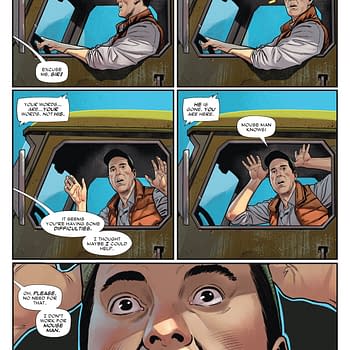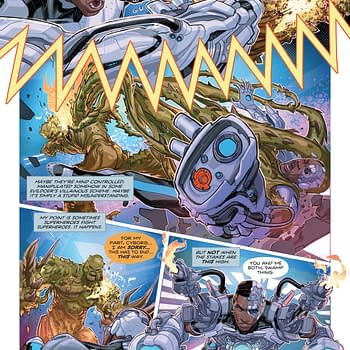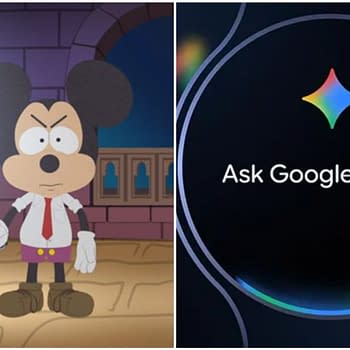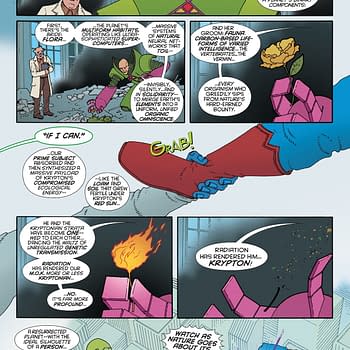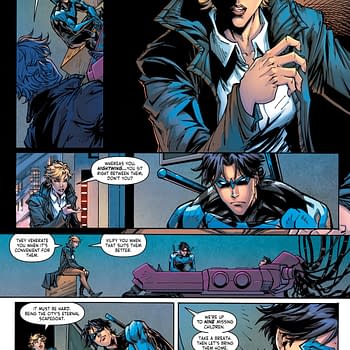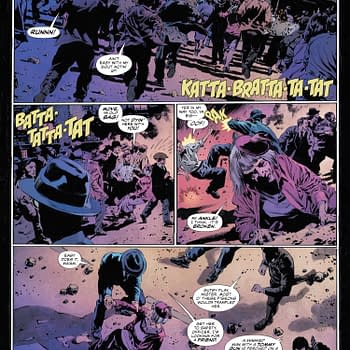Posted in: Comics | Tagged: Antonio Fuso, Comics, dynamite, entertainment, james bond, kieron gillen, Service
Kieron Gillen On James Bond And The Fading Empire
Dynamite has been tapping some pretty talent folks to write their James Bond comics. Warren Ellis, Andy Diggle, James Robinson and Benjamin Percy have all jumped into the universe… now you can add the name Kieron Gillen. The Wicked + The Divine, Darth Vader and Uber writer teams with artist Antonio Fuso for a OO7 one-shot special called Service and I got a chance to talk to him about the iconic character and the elements that make a good Bond story. Cover art by James McKelvie.

KIERON GILLEN: To aspire to write James Bond would be to aspire to write the sunrise. It's been there all my life. It's part of the British skyline. And really? I'm not the sort of writer who actually ever spends much time thinking about writing characters which are not my own, as much as I love to do it. I wait until I'm asked, and then see what my brain does.
So in this case, Nicki asked if I'd be interested in doing a James Bond one off. I've been looking for a chance to work at Dynamite for a while, and – well – IT'S JAMES BOND.
DW: One of the themes of this book is nationalism. The world has changed quite since Ian Fleming introduced us to James Bond. What does the character mean in relation to British pride and how do you see him fitting into today's culture?
KG: That's what the book sort of plays with. It's explicitly a book about fading Empire. M16's roots are in World War 2, and the core of the plot reaches back to there. What is Britain's place in the world now? What does being British even mean? In a real way, it is a post-Brexit Bond. The story was developed in the gap between our vote and your vote.
DW: You've given us a very different OO7 story devoid of the beautiful women and exotic locals and filled with more of the history of the British spy agencies. What made you go in that direction?
KG: As a single issue, you've got to choose your battlefields. What is Bond? It took me a while to wrestle down – I ended up going to a walk around the Imperial War Museum, as they have a history of spycraft exhibit on to chew it over. My core idea is about realpolitk rather than heroism, as this is very much the book Bond rather than the movie Bond. So I'm wandering around there, and get the missing links. For the start, the Imperial War Museum is a wonderful setting…
Bond does make a joke about it, to be fair. He really would be happier in a place where bikinis are formal-wear.
DW: Since we can see the things you left out, I am curious what elements do you think are crucial to a James Bond story? Do these elements differ in different mediums? Is there something that works in the novels that couldn't translate to the comics or film?
KG: I'd read Warren and Andy's take before starting mine, so wanted something at least vaguely aesthetically in line with that. They're two of the best action writers in the entire business, so I knew the mode of action I was playing with. The key difference is actually less comics versus film or prose, but rather the short form versus the long form. What Andy and Warren is doing is more in line with that – a large adventure. I have to think more concentrated, and do a Bonsai scale Bond which still carries a punch. As such, I did have a list of elements I thought core, not least because the fun of something like this is to do my take on all the classics. So I have a M scene, a Q scene, a Moneypenny scene, and certainly a scene in a bar. But for me, the structure was the slow build of investigation, travelling to unusual, interesting locale, meeting someone nefarious and it ending badly… and Bond overcoming.
The question in all of this is the "How." With the short form, you try to hit something at an unusual angle and make it linger. You can't do the grand sprawling adventure, so you go for a slight deflection.
DW: How much of this story is influenced by the recent political changes in both the United States and in the United Kingdom? The relationship between Bond and Leiter is a lot like that between MI6 and the CIA. Do you think that relationship is still valid in this changing world?
KG: I'll have to think about it. Sounds like a good idea to work as the intellectual backbone of a one-off Bond special coming out via Dynamite in May though.
DW: Being that this was a one-shot, you didn't have a lot of room to work with, yet you were able to work in Leiter, M, Q and Moneypenny. Was there anything you wanted to work in but just didn't have the space or that just didn't work for the story?
KG: That I knew the length defined the sort of thinking. If I had more pages, I'd have expanded things and lingered more, but not really added anything. There's certainly some areas where I compress in fun ways. I mean, it's Bond. I could always do with another four pages in every fire-fight. I was thinking of it like a folk song – we all know how it goes, but we want to see how you do it. The trick was to include all what I considered core Bond… but also make it very much Kieron Gillen Writes Bond With Antonio Fuso's Stylised Realistic Art.
Basically, if I didn't get Bond with a sten-gun, I would have considered the endeavour a failure.
Suffice to say, the endeavour was not a failure.
DW: And let's end it with the basic questions: who's your favorite Bond actor? Do you want to see Daniel Craig return for the next film? And who would you like to see as the next OO7?
KG: Connery. If he wants to. Eva Green. Eva Green is my response to any casting decision, by the way.
For more on James Bond: Service, click here.









